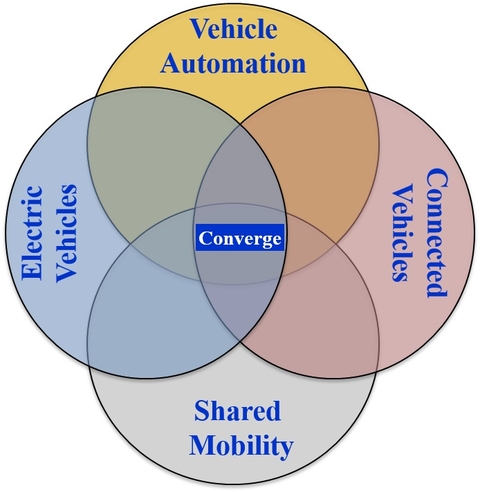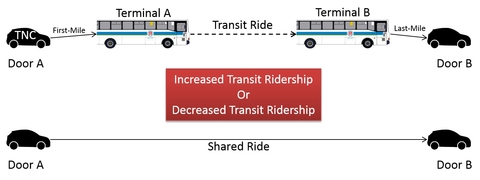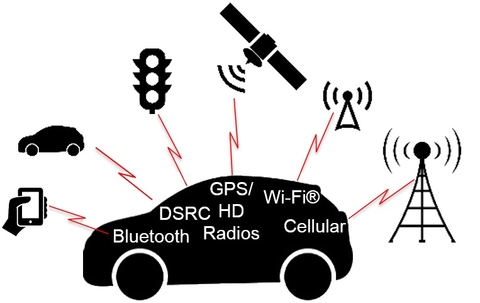Smart Cities - the Opportunities & Challenges of Connected & Autonomous Vehicles
by Raj Bridgelall and Denver Tolliver
The convergence of vehicle electrification, ubiquitous wireless connectivity, automated mobility, and the sharing economy is poised to be the most transformative trend since the Internet. These technologies will likely reshape the transportation industry as the innovations of startup companies mature or incumbent giants acquire them. As data becomes the “new oil,” information-technology giants are transitioning their business models to compete with traditional vehicle manufacturers and vice-versa. These smart city trends are evolving to improve quality of life by reducing the gridlock and pollution that is commonplace today.

A smart city integrates diverse sets of information, communication, and mobility technologies to monitor condition, security, safety, service quality, and operational efficiency, often in real time. Connected and autonomous vehicles (CAVs) that can sense their environment and navigate without human inputs brings both opportunities and challenges for planners, engineers, manufacturers, and policy-makers. These trends lead to complex questions that currently have no clear answers.

Will the ride shared CAVs increase urban congestion and parking demands because they might idle or roam for passengers, or will they decrease congestion and parking demands because they could increase vehicle utilization, and promote more stable traffic flows? Will CAVs eliminate first- and last-mile accessibility issues to increase transit ridership, or will the convenience of door-to-door service shift riders away from public transit? Will vehicle electrification actually increase pollution because they create a higher centralized demand for energy, or will they reduce pollution because centralized plants can better manage emission recycling and/or substitute fossil fuels for alternative energy sources? Will policy-making delay the pace of technology adoption by making pre-mature assumptions about impacts on safety and the economy, or will a laissez faire approach promote market-driven innovations that might better address cybersecurity, safety, and privacy concerns? Will vehicle automation reverse urbanization trends because they will decrease the burden of attentive long-distance driving, or will the corresponding increase in travel-time and fuel cost discourage riding to suburban homes?

Potential answers to these and other complex questions involve multidisciplinary and interdisciplinary research. The convergence of vehicle automation, connectivity, and wireless charging with cloud-services, the Internet-of-Things, big data, and machine learning adds further complexities and uncertainties. To begin the search for answers, researchers in the field of transportation science and technology must gather data to understand travel demand, trip distribution between origins and destinations, mode choice, and physical transportation network capacities. Trip demand is a function of both the need to travel and socio-economic factors. The origin and destination of trips is a function of the spatial layout of activity centers such as businesses, schools, shopping districts, and entertainment. The choice of transportation modes depends on their availability, cost, flexibility, accessibility, weather, total travel time, travel-time reliability, ride comfort, convenience, and numerous other factors. The capacity of road and rail networks is a function of their geometrical configurations, surface condition, terrain, bottlenecks, construction, speed limit, following-distances, and incidents. While it is easier to gather the required information in the age of big data, there is a lack of multidisciplinary experts to model such complex systems to forecast the potential safety, mobility, environmental, and economic benefits of shared-CAVs. Hence, the critical need worldwide is education for the next generation of professionals and scientists.
Raj Bridgelall, Assistant Professor, College of Business; Program Director, Center for Surface Mobility Applications & Real-Time Simulation environments (SMARTSeSM), North Dakota State University, Phone: 408-607-3214, E-mail: [email protected]
Denver Tolliver, Director, Upper Great Plains Transportation Institute, North Dakota State University, PO Box 6050, Fargo, ND, 58108-6050. Phone: 1-701-231-7190, E-mail: [email protected]